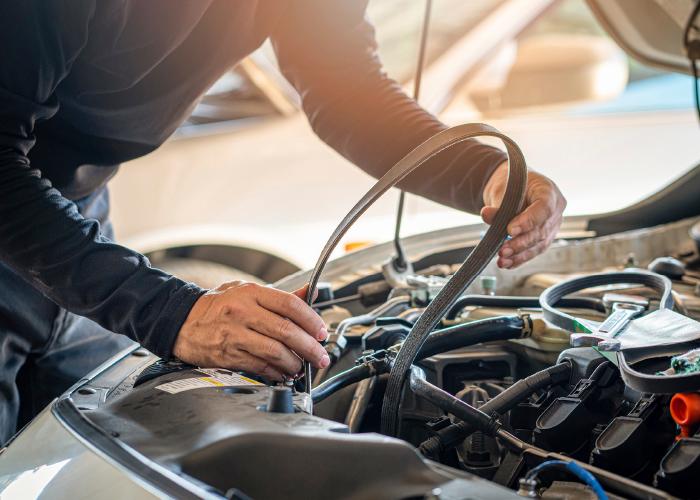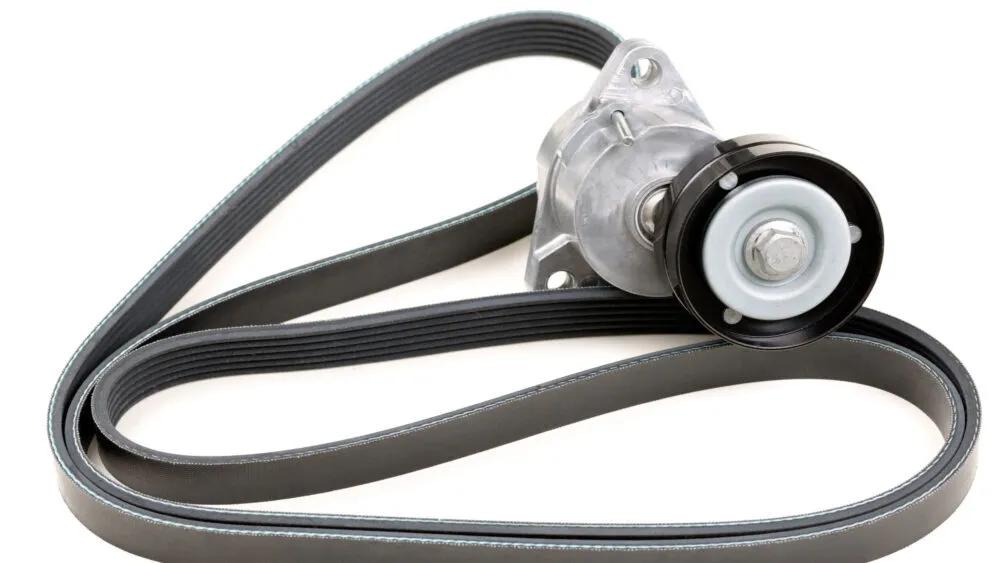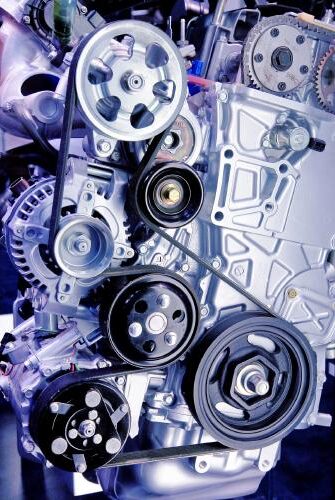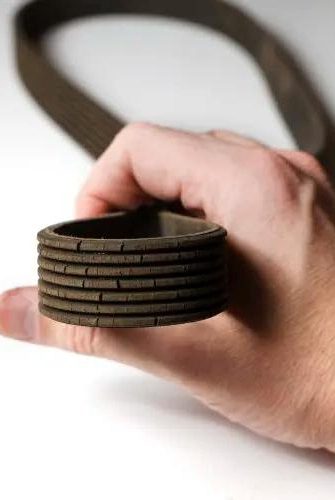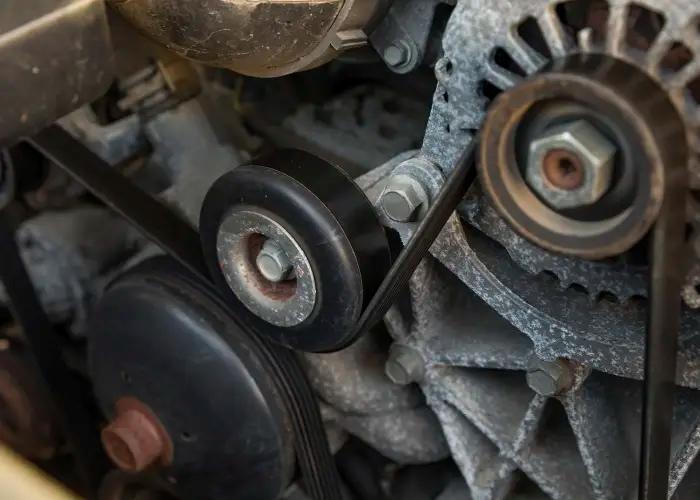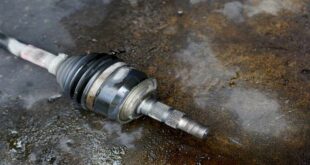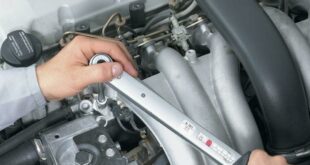A squeaky one fan belt There's more than just an acoustic nuisance under the hood; it could be an indication of a serious problem. The most common culprit for the unpleasant noises is a slipping fan belt, also known as drive belts or drive belt, and in its modern form as V-ribbed belts. If this is old and overstretched, it sits too loosely on the V-belt pulleys, which causes squeaking. The problem worsens in the rain and cold, as the damp belt has even less grip. However, if the squeaking only occurs shortly after driving through a puddle of water, there is no need to worry; then the belt just got wet. However, if the noise occurs more frequently, especially after starting and in the first few kilometers, the V-belt should either be re-tightened or replaced. But how can you change the V-ribbed belt?
Changing the V-ribbed belt?
The fan belt is an essential part of the engine, responsible for supplying the auxiliary units. The V-belt is from the rotating crankshaft driven and has a V-shaped cross section. This makes it possible to use the power of the engine through the friction to be transferred to the V-belt pulley on its side surfaces. His further development, the V-ribbed belts, has ribs on the bottom that engage the pulley grooves and allow for smaller radii. This belt drives, among other things alternator, Power Steering, water pump and Air conditioning compressor at. If the V-belt is worn or defective, it can break, resulting in a loud bang from the engine compartment. As a result, various problems can occur, such as the lights lighting up battery indicator light, sluggish steering or, in the worst case scenario, the engine overheating if the V-belt is too water pump drives.
How to recognize a defect?
In addition to the squeaking noises, a Fading of light or heavy steering be an indicator. But a poorly tensioned V-belt doesn't always have to squeak; Regular checks are therefore important. The V-belt should not be more than one to two centimeters move when you pull firmly with your finger. It shouldn't be brittle or cracked either. Traces of wear, hardened or smooth outer edges, rubber abrasion or broken pieces are warning signals that a change is necessary. Changing the V-belt can vary depending on the vehicle. In most vehicles, the V-belt is tensioned using the alternator. To change or tension the belt, you must loosen the alternator screw connection. However, for some engines that drive several auxiliary units, changing or re-tensioning can be more complex and require special tools.
Hardly any material costs, but the installation makes all the difference...
The material costs for a V-belt are between five and twenty euros. When repairing in a workshop, the costs can vary due to the number of hours worked, especially for newer vehicles with tightly fitted units. Finally, a word about V-belt sprays: These are intended to keep the belt supple and prevent squeaking, but their effect is controversial. If the noise persists, we recommend a visit to the workshop. It is important to note that a V-belt not with one Timing belts should be confused because they perform different functions in the engine.
Further information on changing V-ribbed belts:
- Cause of squeak: Slipping V-belt/V-ribbed belt, usually through Overstretching and looseness
- Reinforcement in wet and cold conditions: Slipping and reduced grip
- Short squeak after contact with water: Nothing to worry about, just moisture on the belt
- Frequent squeaking: Re-voltage or replacement required
- Function of the V-belt:
- V-shaped cross section, drives auxiliary units
- Driven by crankshaft rotation
- Transmission of engine power via lateral flank friction on the V-belt pulley
- V-ribbed belts with longitudinal ribs for better grip in pulley grooves
- Drive of alternator, power steering, fan, water pump, hydraulic pump, air conditioning compressor
- Material: Durable rubber with textile or steel cable insert
- Possible damage if defective:
- Wear and tear due to continuous stress
- Risk of belt breakage, especially in winter when there is increased power demand
- Consequences of a crack: Battery indicator light active, steering stiff, risk of engine overheating
- Regular V-belt checks:
- Checking the tension (max. 1-2 cm mobility)
- No brittleness or cracks
- No signs of wear or rubber abrasion
- Replacement necessary if damaged
- V-belt change:
- Tighten if loose (unless porous or cracked)
- Change usually via alternator
- Ensure correct position on all panes
- Some engines require complex changes or special tools
- Elastic belt: Self-tightening, requires special tools to change
- idler: Automatic tension, replacement necessary in case of defects
- V-belt change in the workshop:
- Costs vary depending on vehicle type and accessibility
- Work usually takes between 1 and 2 hours
- More complex on newer vehicles due to tight installation
- Difference between V-belt and timing belt:
- V-belt for auxiliary units, timing belt for camshaft drive
- Timing belt with plastic composite material and internal teeth
- Myth women's stockings:
- Historical emergency solution for broken V-belts, not applicable to modern vehicles.
FAQ Changing V-ribbed belts
When does the V-ribbed belt need to be changed?
- Change interval: Recommendation is around 80.000 to 100.000 kilometers or if the V-belt more than 5 years old is.
- Dependencies: Change may vary depending on car model, driving style and loads.
Costs for changing a V-belt
- Duration: About half an hour to an hour for an experienced mechanic.
- Costs: Expect costs between 60 and 110 euros.
Difference between V-belt and V-ribbed belt
- Nature: V-ribbed belt is wider and has ribs on the bottom.
- Development: V-ribbed belt is a further development of the traditional V-belt.
Identification signs of a defective V-belt
- Acute sign: Power steering failure and noise in the engine compartment.
- Defect indicators: A broken V-belt can have an immediate impact on the vehicle's controls.
V-belt test at TÜV
- TÜV test: A squeaky V-belt requires notification; a porous or damaged belt is considered a defect.
Changing the V-belt yourself
- Possibility: With technical skill, a V-belt can be changed or re-tightened yourself.
- Note: Recommended only if the V-belt is not porous, worn or broken.
Consequences of a broken V-belt while driving
- engine failure: Causes the water pump to stop and thus the engine to overheat.
- recognition: If the temperature display rises to the red area, it signals overheating.
Lifespan of a V-belt
- Average durability: between 60.000 & 80.000 kilometers.
Causes of the squeaking of the V-ribbed belt
- reasons: Wetness, low engine temperature, insufficient voltage.
- Age of straps: Older V-belts are more likely to squeak than modern V-ribbed belts.
Noises from a defective V-belt
- the Anzeich: Squeaking can indicate a defective roller or other components in the V-belt system
The following note is essential: For safety reasons, tuningblog recommends all repair, inspection and maintenance work exclusively to be carried out in a specialist workshop! Although our information is summarized to the best of our knowledge and belief, we cannot assume any liability for the content. All information is therefore "without guarantee".
That wasn't it yet!
In our Auto Repair Category you will find advice and instructions on common vehicle defects, repairs and the installation of accessories/tuning parts.
 tuningblog.eu Your magazine about tuning the car
tuningblog.eu Your magazine about tuning the car
